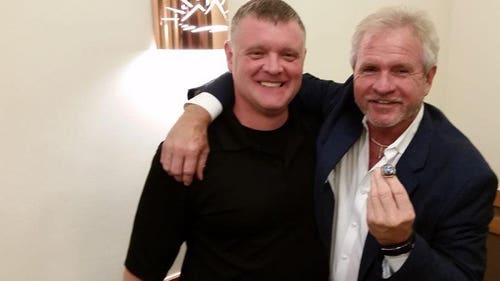Tommy John surgery can work once, twice — even 3 1/2 times — for major league pitchers
NEW YORK (AP) — Shohei Ohtani, Jacob deGrom and Walker Buehler found out Tommy John surgery is no longer a rarity but now routine.
Pitchers can look to Jonny Venters as they return from a second operation to repair a torn elbow ligament: He made it back to the big leagues after what he calls 3 1/2 Tommy John procedures.
“The rehab process definitely evolved for the better,” said Venters, along with Jason Isringhausen the only three-time veterans of Tommy John surgery. “I’ve heard great things. I feel like they’re having a lot of success.”
As TJ surgery approaches its 50th anniversary in September, baseball researcher Jon Roegele’s online record lists over 2,200 players who had the operation. Among them are 151 who have had it twice.
Harder throwing has contributed to injuries: The average four-seam fastball velocity was a record 94.2 mph last season, up from 91.8 mph in 2008, according to MLB Statcast data. Parents buy youth players weighted balls and track them with radar guns, and training centers such as Driveline Baseball in Kent, Washington, refine motions.
It does not seem coincidental that the number of players selected in the amateur draft who already had Tommy John surgery increased from eight in 2017 to 31 in 2022 and 23 last year. And if players are getting the surgery early in their careers, that leaves more time for later injuries.
“There’s two phenomena that have been happening here,” said Glenn Fleisig, director of biomechanics research at the American Sports Medicine Institute in Birmingham, Alabama. “First, more adolescents, high school and college pitchers are getting Tommy John or UCL surgery. And the other one is teams are not shying away, as they were in the past from drafting someone like that.”
Since returning from a second TJ, Nathan Eovaldi is 41-27 and became a two-time All-Star, Daniel Hudson has made 420 appearances over a decade and Chris Capuano pitched in 192 games over seven seasons. Jameson Taillon came back in 2021, Chris Paddack in 2022 and Hyun Jin Ryu last year. DeGrom, Dustin May and Shane McClanahan are in the rehab process, and Buehler is nearly ready for his return.
Ohtani, the unprecedented two-way star, had TJ surgery in 2018 and had a second procedure last September, a so-called hybrid procedure developed by Texas Rangers team physician Dr. Keith Meister. The traditional ligament replacement is combined with an artificial internal brace designed by ASMI’s Dr. Jeffrey Dugas in 2013. Even though Ohtani won’t pitch until 2025, the Los Angeles Dodgers didn’t hesitate to sign a record $700 million, 10-year contract.
Venters has the most extensive TJ experience.
Dr. James Andrews operated on him in 2005, when the left-hander was a 19-year-old prospect in Class A, and then again in 2013, when Venters was a three-year veteran with an All-Star appearance. After the ligament failed again, Dr. Neal ElAttrache operated in September 2014. ElAttrache did another procedure in September 2016.
Venters returned to a big league mound in April 2018 after an absence of 2,028 days.
Andrews took a palmaris longus tendon from the forearm for the first operation and a gracilus tendon from the knee for the second.
“I went to Dr. ElAttrache in LA for my third, and he does a little different procedure,” Venters said. “Instead of drilling as many holes, he anchored the ligament down with a Titanium button that he drilled into my bone.”
Venters’ ligament was torn again after just five minor league rehab outings. That led to what Venters called Tommy John 3 1/2.
“Dr. ElAttrache didn’t want to do a fourth Tommy John just because I guess the bone had been drilled so much. He was concerned with having the bone fail,” Venters said. “So he went back in there and tied it all back together, and that one’s been good ever since.”
Venters went 5-3 with a 5.31 ERA and four saves in 62 appearances for Tampa Bay, Atlanta and Washington in 2018 and ’19, then tore a capsule in his left shoulder, ending his career at age 34.
Even if they're going through the process a second or third time, players sent to the doctor fear their injury could be a career-ender. In addition to surgical skill, orthopedists like New York Mets medical director David Altchek have to provide reassurance — an easier task after so many successes.
“You tell them that this is unfortunate, but this is your MRI," he explained. “This is probably why it happened — meaning you threw outside the envelope of your tissue quality — but we have a procedure that can repair your ligament and reconstruct it, kind of a belt/suspenders way that once it heals, the likelihood of you going back to pitching at the same level or above is 95%. And that usually does it.”
___
AP Baseball Writer Jay Cohen contributed to this report.
___
AP MLB: https://apnews.com/hub/mlb









